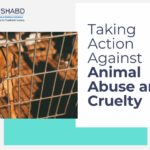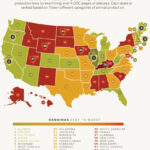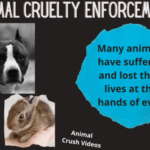When we consider the plight of animals in today’s society, it becomes a somber reflection of humanity’s darker inclinations. Every year, multitudes of animals suffer due to various forms of cruelty. The statistics are staggering and troubling, extending across different types of abuse, neglect, or exploitation. As we look back over the last decade, it is pressing to probe the dimensions of how many animals have perished as a consequence of human malevolence.
To understand the complexity of animal cruelty, it is crucial to acknowledge the various forms it takes. These forms include neglect, which can occur in domesticated settings, and outright abuse, where human actions lead to direct harm. Additionally, certain practices, such as factory farming and the fur industry, systematically contribute to high mortality rates among animals. It is these systemic issues that necessitate a deeper examination.
Over the past ten years, data on animal cruelty has gathered greater visibility, spurred by advocacy efforts and social media campaigns. The figures can be mind-numbing; millions of animals die each year in the United States alone from abuse and neglect. Specifically, reports indicate that an estimated 10 million animals are victims of abuse each year, but this figure likely underrepresents the realities of many communities where reporting is scarce and awareness low. Furthermore, when one examines these numbers, it becomes evident that domesticated animals like dogs and cats are not the only victims. Wild animals also face relentless threats. An estimated 100 million animals are killed annually for their fur, while countless others perish due to habitat destruction and illegal poaching.
Escalating awareness of these grim statistics points toward a growing fascination with the subject of animal welfare. The general public often grapples with feelings of empathy and righteous indignation when faced with stories of cruelty. However, this interest can sometimes obscure the realities of systemic issues fueling such maltreatment. For instance, while people rally around individual cases—like a pet rescued from a dire situation—these narratives often overshadow the broader societal norms that allow such cruelty to persist unchecked.
Investigations into animal cruelty expose a landscape marked by multiple layers of complicity. Many perpetrators of cruelty are not overtly sadistic; rather, they might act out of ignorance or socio-economic hardship. The neglect of household pets is commonly linked to lack of resources or education, while farm animals are often subjected to conditions driven by profit motives and demand for inexpensive food sources. This cycle reveals a societal tendency to commodify living beings, evaluating their worth based on economic utility rather than intrinsic value.
The sheer numbers related to animal cruelty compel us to confront uncomfortable truths. Many cultures around the world continue to engage in practices that result in mass animal deaths, often justified by tradition or economic necessity. From the annual dolphin hunts in Japan to the dog meat festivals in parts of Asia, these acts serve as a stark reminder of how deeply ingrained cultural narratives can lead to systemic cruelty are still prevalent. However, it is crucial to distinguish cultural practices from cruelty. Not all traditional practices inflict harm, but wherein they do, humane alternatives must be sought.
Additionally, the legal framework surrounding animal welfare varies widely from one country to another. Some nations have comprehensive animal protection laws, while others lack any regulations at all. This disparity complicates the ability to accurately assess how many animals suffer, leading to potentially vast underreporting of abuse cases. Strengthening legal protections could help mitigate some of these issues, yet the enforcement of such laws remains inconsistent—a gap that should not be overlooked when contemplating the future of animal welfare.
Furthermore, as we look at the animal hoarding phenomenon, we observe an alarming trend where individuals retain more animals than they can care for, leading to severe neglect and often death. This brings to light the intricate mental health issues that can be intertwined with animal cruelty. The stigma around seeking help for psychological problems often worsens these situations, as perpetrators may not recognize the consequences of their actions until it is too late. Interventions that address both animal welfare and mental health could pave the way for more humane outcomes.
The last decade has seen a burgeoning movement advocating for animal rights that seeks to bridge the gap between awareness and tangible change. Organizations dedicated to rescuing and rehabilitating abused creatures are more prevalent than ever, shining a light on the need for humane treatment. Alongside grassroots campaigns, high-profile investigations expose the shocking realities of factory farming, fur production, and animal testing, inciting public outrage and compelling consumers to reconsider their choices.
Public response to these exposés, when informed, can foster collective action. Veganism and vegetarianism are on the rise, as increasing numbers of individuals reject the consumption of animal products linked to cruel practices. Awareness campaigns and educational initiatives play an essential role in moving public opinion and legislating change. However, these efforts must be nourished with a comprehensive understanding of the systemic roots of animal cruelty, addressing not only individual cases but also the societal structures enabling these atrocities.
Ultimately, looking back over the last decade reflects an intimate intersection of humanity and our relationship with the animal kingdom. As long as individual stories captivate our attentions and challenge our ethics, the quest for change will remain fervent. By confronting these truths and reshaping our collective narratives surrounding animal cruelty, society can take crucial steps toward fostering an empathetic environment for all sentient beings. Only then can we hope to drastically reduce the number of lives lost to senseless acts of cruelty and ensure a more compassionate world for future generations.








